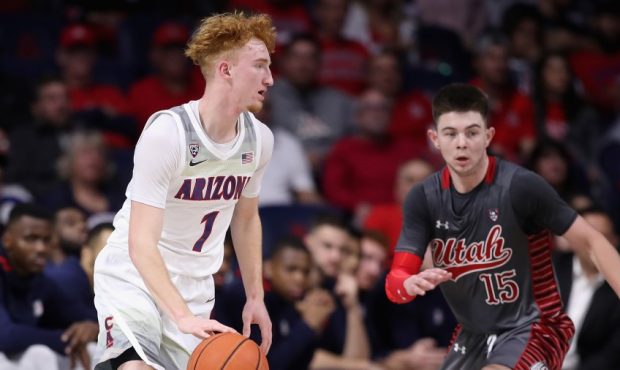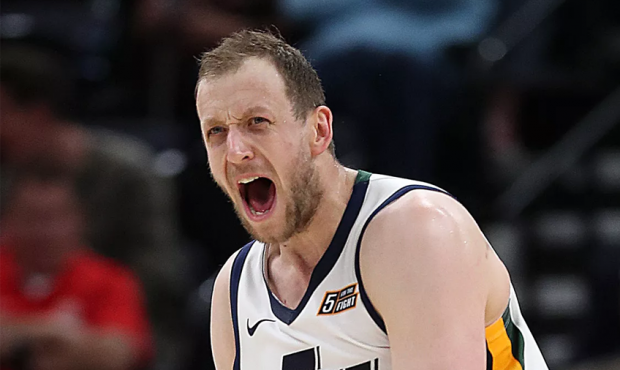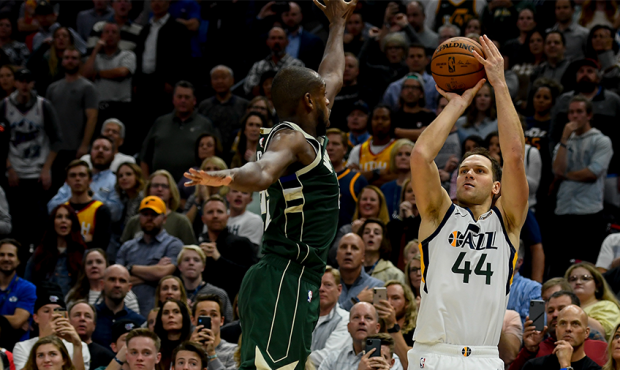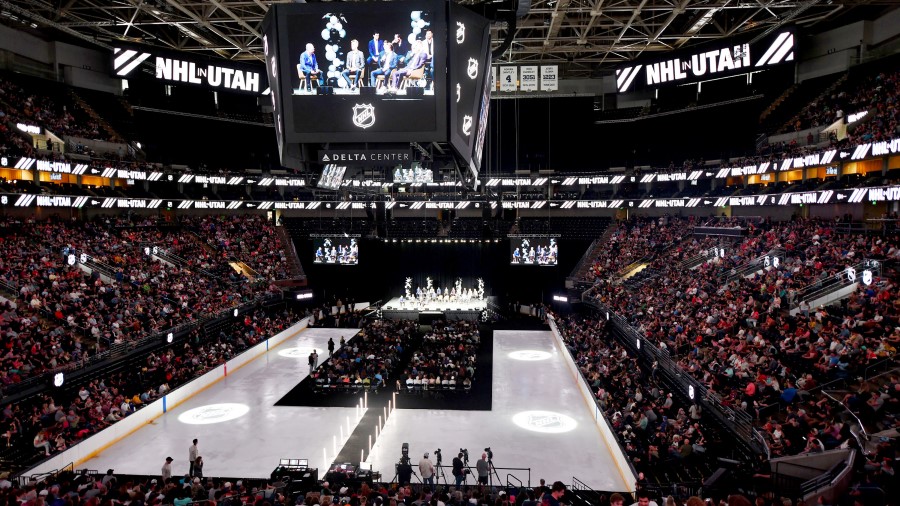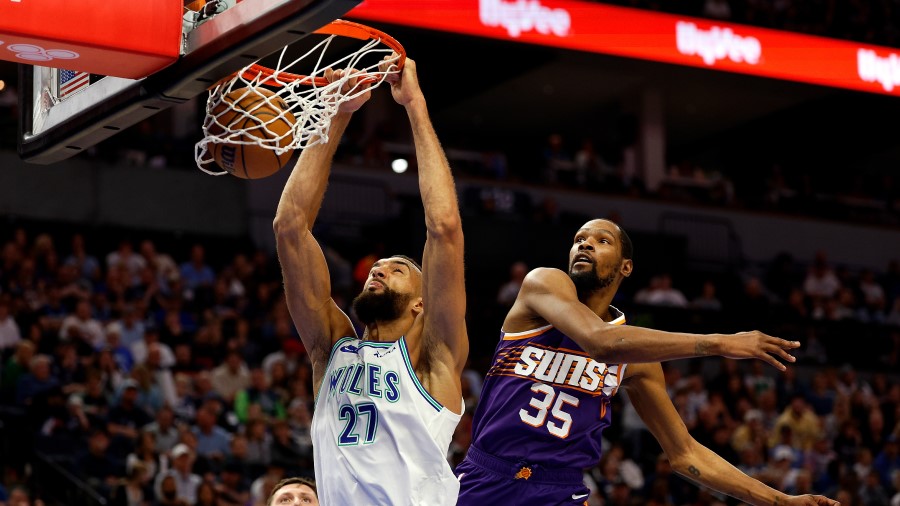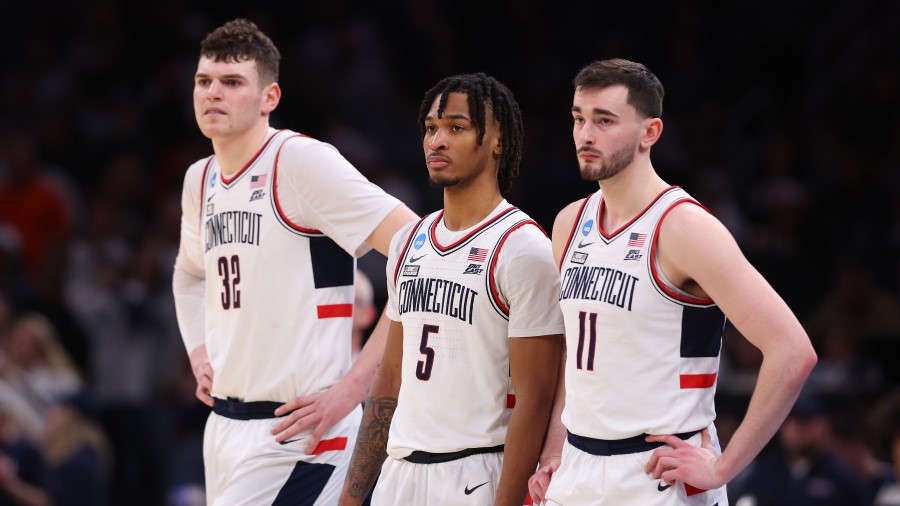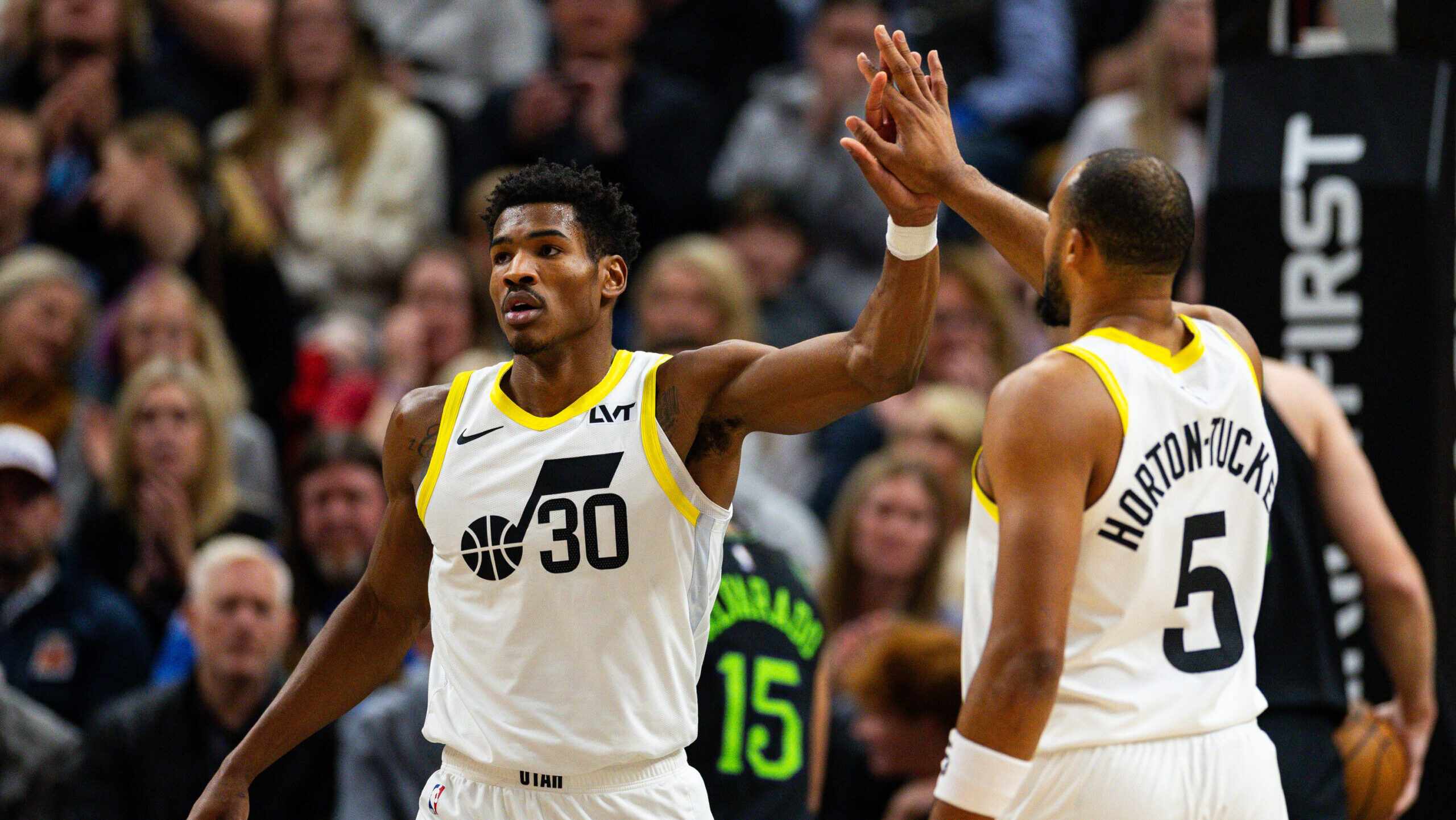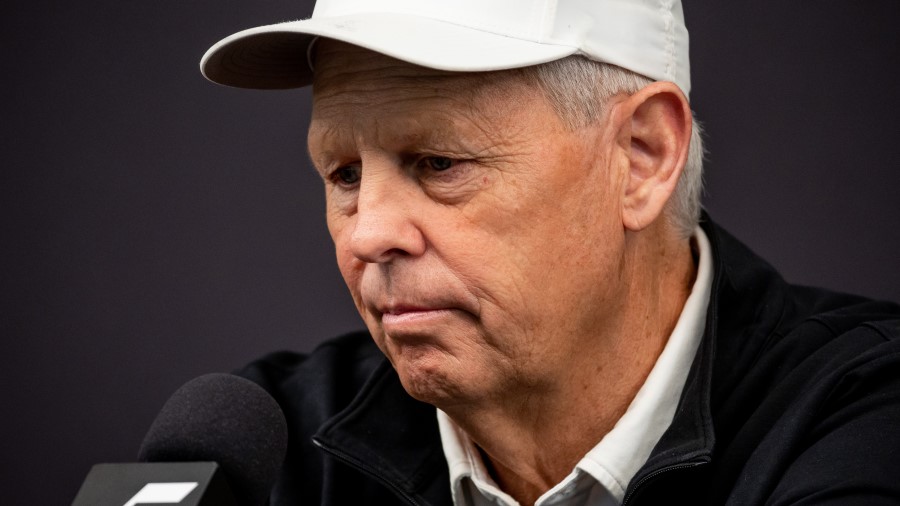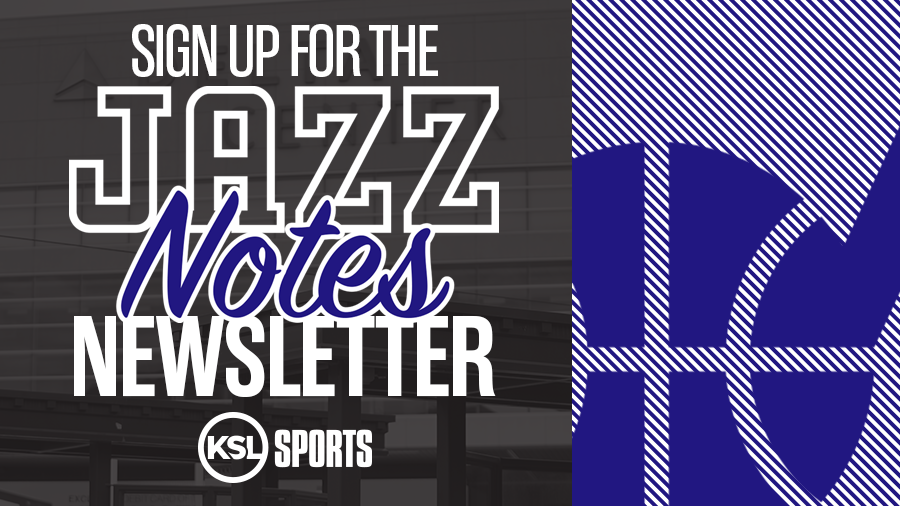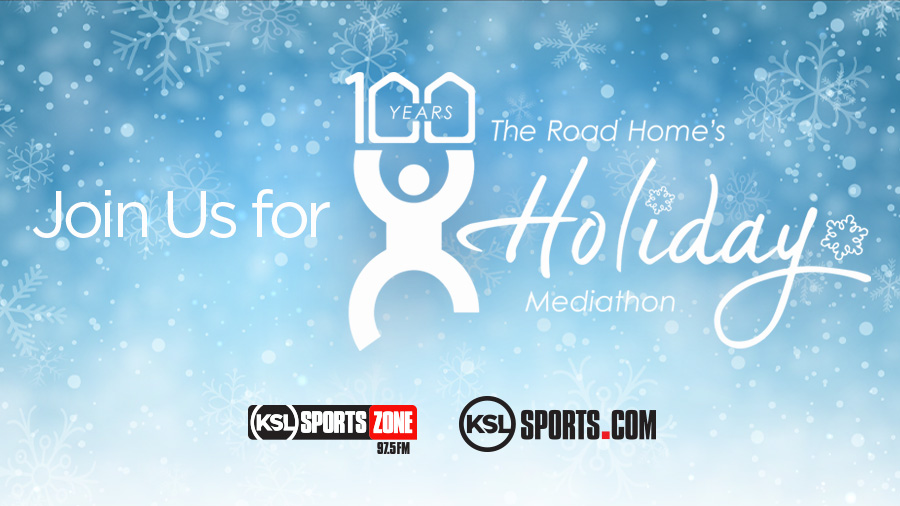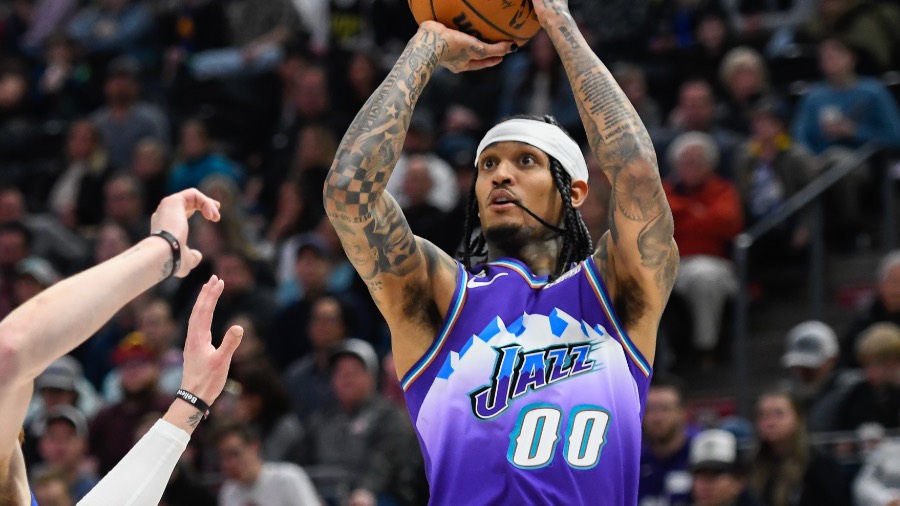Where Are The Jazz In Their Draft Preparation?
Apr 8, 2020, 2:52 PM | Updated: 2:54 pm
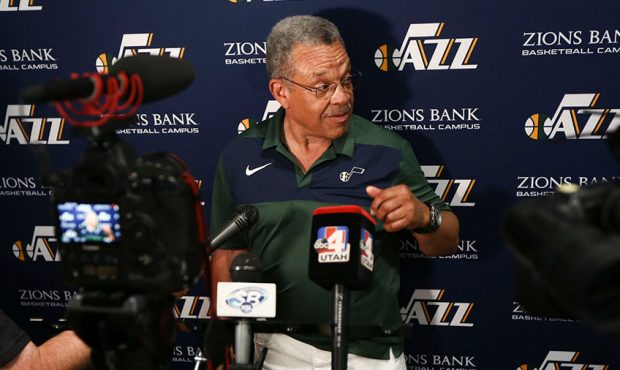
Jazz Vice President of Player Personnel Walt Perrin speaks to media after a workout for the Utah Jazz before next week's NBA draft at the Zions Bank Basketball Center in Salt Lake City on Saturday, June 15, 2019. (Silas Walker, Deseret News)
(Silas Walker, Deseret News)
SALT LAKE CITY, Utah – In the latest episode of the Jazz Notes podcast, I sat down with Utah Jazz Vice President of Player Personnel Walt Perrin to discuss how the lack of college and international basketball has changed the Jazz draft day preparation.
First and foremost, while there will certainly be a draft, the set date of June 25 is very much in doubt due to the uncertain nature of how the NBA season will end. If by early May, the league decides a return to action is untenable, I’d expect the draft to go forward as scheduled.
However, if the NBA returns to action, it may be reasonable to push the draft back until the season is officially over, whatever that may look like. Though it would be possible to host the draft as soon as the regular season finishes, setting a final draft order, waiting until the postseason ends may give teams a further understanding of roster needs depending on their playoff matchups.
Despite the stoppage in play, Perrin said he and the Jazz aren’t entirely far off from where they would be at this point in a more traditional draft season. Though the Final Four would have wrapped up this past Monday, the team is still awaiting the early entrants’ list from the NBA to know which players have officially declared for the draft.
“I would have just been finishing up watching some of the high school events,” Perrin said, “Right now I would be preparing to go to Salt Lake to set up workouts once we got our list from the NBA office in the next few weeks.”
With no live-action, Perrin and the Jazz scouts have begun pouring over older games to catch up on players they have yet to see collectively as they prepare for the draft.
“I’m really trying to catch up on some guys who I might not have seen this year,” Perrin said, “I haven’t had a chance to get over to Europe to watch a certain number of players so I am starting to look at synergy and tapes of those types of players also.”
Though the Jazz are preparing for the draft as if it were scheduled for June 25, the NBA’s current restrictions are making draft prep more difficult for teams across the league, including the Jazz.
“The concern is are we going to be able to have workouts?” Perrin asked, “Are we going to be able to have in-person interviews, are we going to get medical reports?”
Though video conferencing should bridge the gap for certain aspects of player interviews, it doesn’t allow for the Jazz to get a full grasp of how a player reacts to certain questions if they were in the same building as the Jazz draft personnel.
“With a phone interview, you’re not able to see body language,” Perrin warned, “In a live interview you can see how guys react to certain questions that may not be facial. I feel you may get a better sense of how well they answer a question, how much trouble or the struggles they may have coming up with an answer. I personally think it’s better to see them live.”
The ability to understand a player’s personality from predraft interviews is of particular importance for the Jazz, understanding the culture in the state of Utah is unlike most other NBA cities.
“Personality for us is very big,” Perrin said, “Background intel is big with us. Certain franchises and I would not say us per see, but speaking in generalities, talent outweighs character, other teams would be character over talent, and other teams would be character plus talent. I would hope when we look at it character is big naturally, but talent is also big.”
While the Jazz are only scheduled to have only their first-round pick in this year’s draft having sent their second-round pick to Cleveland in exchange for Kyle Korver in 2018, having the opportunity to interview players that may have long NBA careers gives the Jazz to gather information about a future trade or free-agent target.
“When Dennis [Lindsey] came in, he talked about trying to do as many workouts as possible. We want to gather as much information about as many players in the draft as we possibly we can,” Perrin said, “We may in five years, six years, seven years down the road being looking at a player that we have worked out before, and have gathered information before he was drafted, and after he was drafted.”
Jordan Clarkson is an example of one of those players the Jazz had previously worked out and were able to go back to their notes to gather information on him as a person before trading for him.
“Towards the tail end of the season and the conference tournament he was struggling a little bit only because he had some off the court issues, personal issues, nothing bad, if I remember correctly one of his family members was going through struggles in terms of illness,” Perrin remembers, “It was affecting his play, and that’s one of the reasons we wanted to bring him in, we wanted to get to know him a little better and find out what was really going on.”
Part two of the Jazz Notes podcast will be released early next week, stay tuned for every episode of the Jazz notes podcast, and you can subscribe and rate the podcast here.

